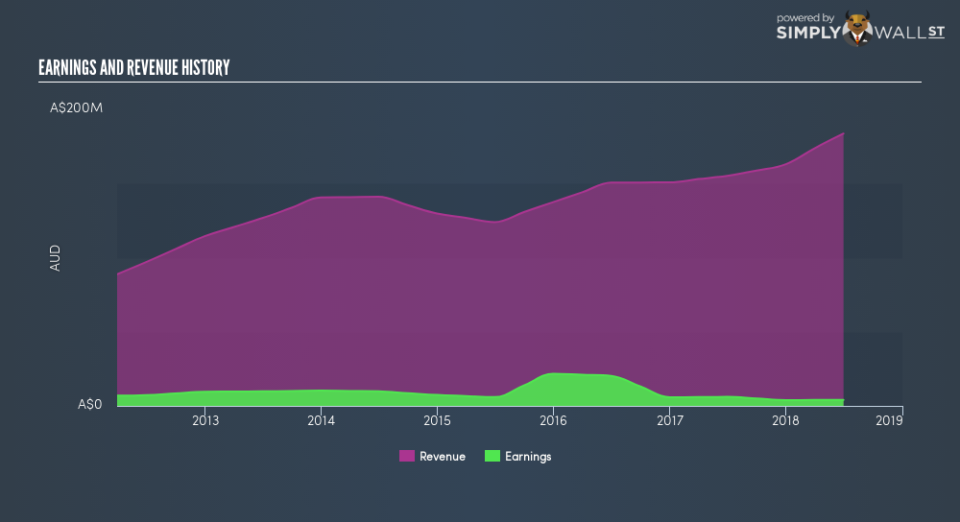Does The CTI Logistics Limited (ASX:CLX) Share Price Fall With The Market?

Want to participate in a short research study? Help shape the future of investing tools and you could win a $250 gift card!
If you’re interested in CTI Logistics Limited (ASX:CLX), then you might want to consider its beta (a measure of share price volatility) in order to understand how the stock could impact your portfolio. Modern finance theory considers volatility to be a measure of risk, and there are two main types of price volatility. First, we have company specific volatility, which is the price gyrations of an individual stock. Holding at least 8 stocks can reduce this kind of risk across a portfolio. The second sort is caused by the natural volatility of markets, overall. For example, certain macroeconomic events will impact (virtually) all stocks on the market.
Some stocks see their prices move in concert with the market. Others tend towards stronger, gentler or unrelated price movements. Beta can be a useful tool to understand how much a stock is influenced by market risk (volatility). However, Warren Buffett said ‘volatility is far from synonymous with risk’ in his 2014 letter to investors. So, while useful, beta is not the only metric to consider. To use beta as an investor, you must first understand that the overall market has a beta of one. Any stock with a beta of greater than one is considered more volatile than the market, while those with a beta below one are either less volatile or poorly correlated with the market.
Check out our latest analysis for CTI Logistics
What does CLX’s beta value mean to investors?
Looking at the last five years, CTI Logistics has a beta of 0.84. The fact that this is well below 1 indicates that its share price movements haven’t historically been very sensitive to overall market volatility. This means that — if history is a guide — buying the stock would reduce the impact of overall market volatility in many portfolios (depending on the beta of the portfolio, of course). Many would argue that beta is useful in position sizing, but fundamental metrics such as revenue and earnings are more important overall. You can see CTI Logistics’s revenue and earnings in the image below.
How does CLX’s size impact its beta?
CTI Logistics is a rather small company. It has a market capitalisation of AU$68m, which means it is probably under the radar of most investors. Companies with market capitalisations around this size often show poor correlation with the broader market because market volatility is overshadowed by company specific events, or other factors. It’s worth checking to see how often shares are traded, because very small companies with very low beta values are often only thinly traded.
What this means for you:
The CTI Logistics doesn’t usually show much sensitivity to the broader market. This could be for a variety of reasons. Typically, smaller companies have a low beta if their share price tends to move a lot due to company specific developments. Alternatively, an strong dividend payer might move less than the market because investors are valuing it for its income stream. In order to fully understand whether CLX is a good investment for you, we also need to consider important company-specific fundamentals such as CTI Logistics’s financial health and performance track record. I urge you to continue your research by taking a look at the following:
Future Outlook: What are well-informed industry analysts predicting for CLX’s future growth? Take a look at our free research report of analyst consensus for CLX’s outlook.
Past Track Record: Has CLX been consistently performing well irrespective of the ups and downs in the market? Go into more detail in the past performance analysis and take a look at the free visual representations of CLX’s historicals for more clarity.
Other Interesting Stocks: It’s worth checking to see how CLX measures up against other companies on valuation. You could start with this free list of prospective options.
To help readers see past the short term volatility of the financial market, we aim to bring you a long-term focused research analysis purely driven by fundamental data. Note that our analysis does not factor in the latest price-sensitive company announcements.
The author is an independent contributor and at the time of publication had no position in the stocks mentioned. For errors that warrant correction please contact the editor at editorial-team@simplywallst.com.

